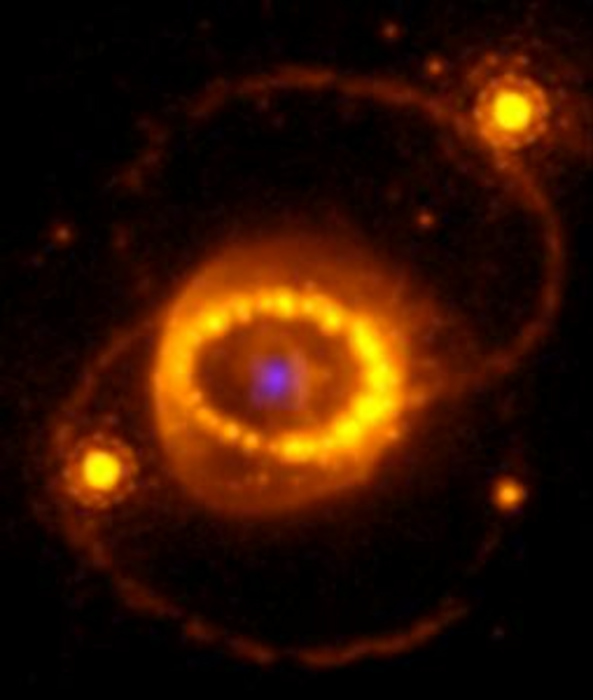The remains left by the only supernova visible to the naked eye in the last 400 years have been observed for the first time: it is a neutron star born following the violent stellar explosion observed in 1987. It was seen for the first time by the space telescope James Webb and his data were analyzed in research coordinated by Claes Fransson of Stockholm University and published in the journal Science.
On February 23, 1987, three solar neutrino detectors detected the arrival of strange neutrinos from Earth and just three hours later a new light became visible in the sky: a supernova called Sn 1987A.
Those 23 neutrinos detected were the first produced by a supernova to have ever been observed.
They had traveled about 168 thousand light years and were the first messengers of the enormous explosion of a star, at least ten times larger than our Sun. Sn 1987A was the first supernova visible to the naked eye after about 400 years, after the one studied by Kepler in 1604 and visible even during the day, as well as the most studied by modern science;
yet, until now it had not been possible to be certain of what existed behind that glow.
The light that appeared inside the Large Magellanic Cloud had certainly been produced by a stellar explosion, but the cloud of gas and dust expelled by the explosion had not yet allowed us to understand what the explosion had left behind: if a black hole or more likely a neutron star, a sort of supercompact mini star.
By focusing the instruments of the Webb telescope, operational since 2022, on Sn1987A, it has now been possible to dispel the doubt and have the first direct confirmation of the existence of a neutron star.
Proof of this was the spectral analysis of the gases detected around the supernova, in which the Argon emission lines were clearly observed, a presence made possible only by a source of X-rays and ultraviolet - exactly as a star of neutrons – located behind gases.
Reproduction reserved © Copyright ANSA

